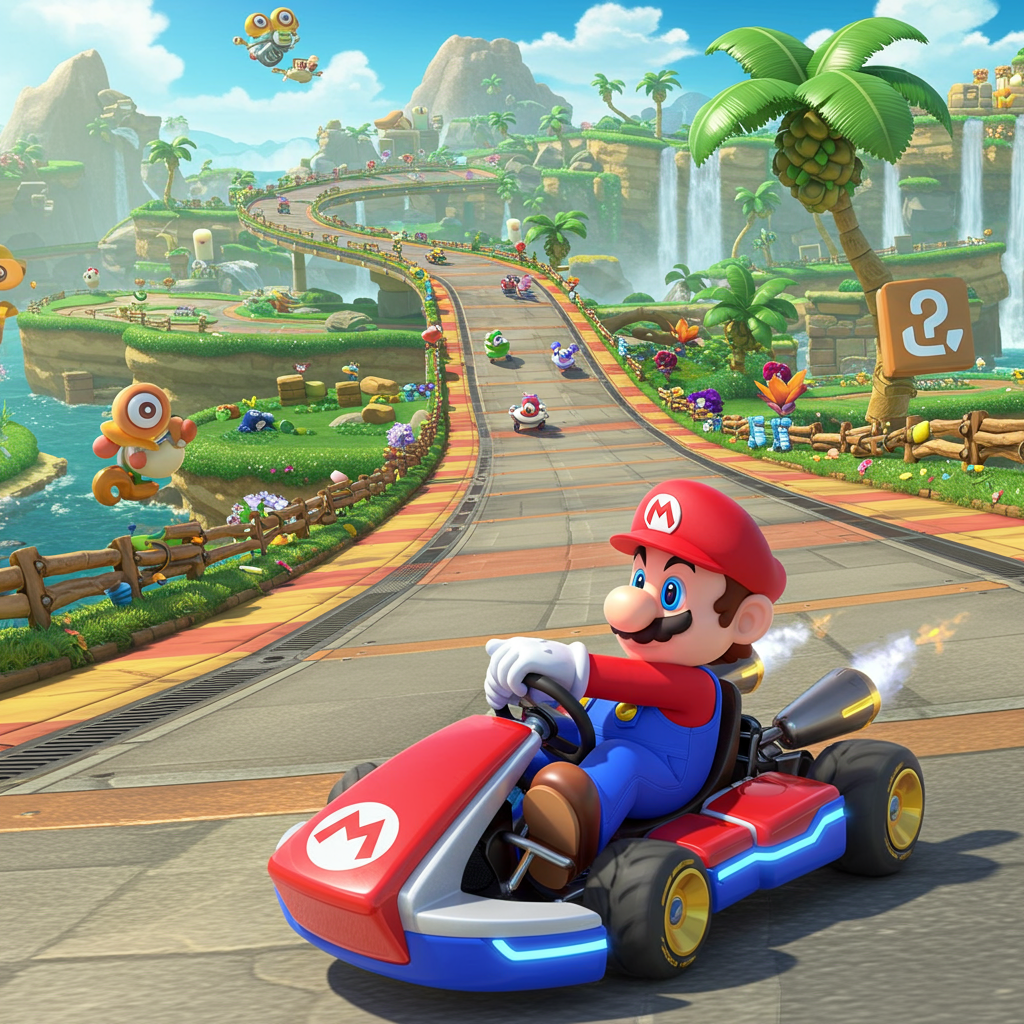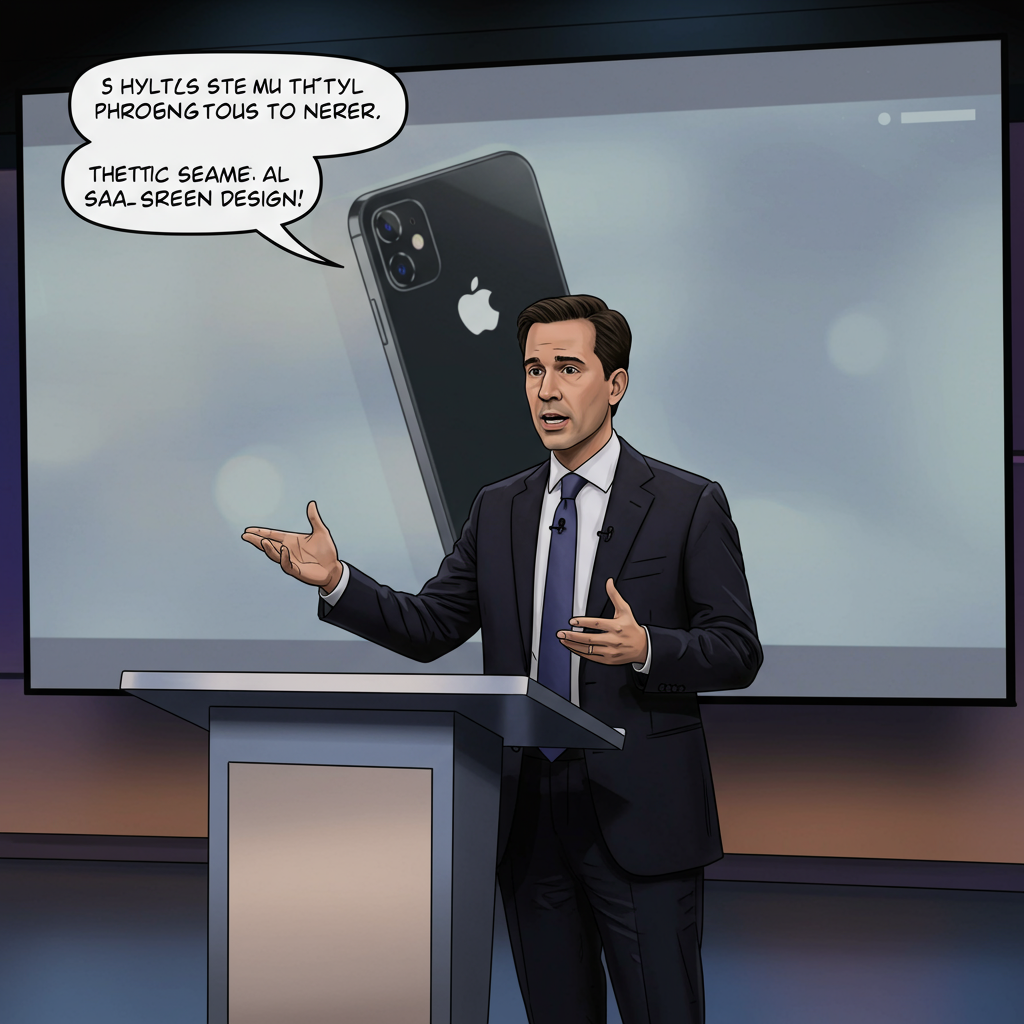Few gaming franchises carry the weight and expectation of Mario Kart. Following the monumental success of Mario Kart 8, which has sold over 75 million copies across Wii U and Switch, the bar for a new entry is incredibly high. With the much-anticipated debut of the Nintendo Switch 2 on June 5, 2025, the Mushroom Kingdom racers are back on the track in Mario Kart World.
This latest installment takes a significant detour from the series’ familiar path, opting for a full-on open-world design. Does this ambitious shift successfully expand the beloved series’ horizons, or does this open-world variation take a wrong turn? Let’s buckle up and find out.
Diving Into the Open World
As its title suggests, Mario Kart World stitches together its 30 diverse courses into one expansive, interconnected sandbox. Players can traverse a variety of iconic biomes, including bustling cities, sunny beaches, dense jungles, arid deserts, and Bowser’s imposing castle. While races primarily keep you on the designated tracks, a new Free Roam mode liberates players to drive anywhere their kart can take them off-road.
Gameplay Mechanics: Familiar Drifts, New Tricks
The core vehicle handling in Mario Kart World feels reassuringly similar to Mario Kart 8. Standard techniques like precise drifting for mini turbo boosts and pulling off tricks remain intact. However, some features from MK8, notably the mind-bending anti-gravity racing, are absent this time around.
In their place are several key additions. Races now feature a bustling 24 competitors, doubling the previous count. The most significant new technique is the Charge Jump. While racing in a straight line, players can build energy and release it to jump for a small speed burst. Though this boost isn’t always game-changing on its own, the jump is often necessary to perform two other new maneuvers: rail grinds and wall rides.
These added techniques – Charge Jump, rail grinding, and wall riding – don’t come as naturally as classic drifts. Against the AI, they aren’t strictly necessary for victory. However, they offer a fun layer for skilled players and provide significant bragging rights in competitive multiplayer. More importantly, moves like rail grinding and wall riding introduce an extra dimension of skill, potentially mitigating criticisms about the series sometimes feeling overly random due to items, especially for those aiming to dominate online play.
Stunning Visuals and Memorable Tracks
A racing game is only as good as its courses, and Mario Kart World largely delivers a strong lineup. Nintendo has truly pushed the boat out with creative and varied course themes. New tracks transport you through an animal-filled safari, a ghostly living movie set, and a spaceport ruled by a colossal robotic Donkey Kong. Many classic courses, like the original Mario Circuit and Dino Dino Jungle, also return but are significantly updated, feeling almost like brand-new experiences.
While the removal of anti-gravity means some tracks might lack the immediate, surprising “wow factor” of certain Mario Kart 8 courses, Mario Kart World‘s tracks are plenty memorable in their own right. Nintendo’s focus on pushing each track’s specific theme results in plenty of unique sights, features, and hazards that keep races engaging.
The game is also a visual stunner. Despite some early concerns based on trailers, playing the full game on a large 4K HDR screen is a treat. From the vibrant colors of Cheep Cheep Falls to the mysterious Great ? Block Ruins and an epic rendition of Bowser’s Castle, Mario Kart World maintains consistently dazzling visuals and runs flawlessly at a locked 60fps, even with 24 karts vying for position. The Nintendo Switch 2’s enhanced capabilities are clearly on display here, offering a significant visual leap.
Open World’s Mixed Impact on Traditional Modes
While most individual tracks are excellent, the open-world structure’s impact on classic modes like Grand Prix isn’t always a perfect fit. Grand Prix cups still start with a traditional three-lap race. However, for subsequent races in the cup, you must physically drive to the next course through transitional routes in the open world. The first few “laps” of these races consist of navigating these connecting pathways before completing a single lap on the core race track.
These transitional routes serve the utilitarian purpose of linking the world but often feature lengthy straightaways. While straightaways can be exciting speed zones in many racers, Mario Kart‘s mechanics mean you hit top speed quickly. Without continuous corners to drift or hazards to navigate, these sections can feel somewhat dull, especially if you’re leading and out of range for item use. It’s clear these sections were likely intended to showcase the new rail grinding and wall riding techniques, but sometimes even these opportunities are absent, leaving you simply holding the acceleration button. While not game-breaking, these transitions dilute the pure racing experience that the core tracks provide.
A new mode, Knockout Tour, leans even more heavily on these interconnected routes. It’s a battle royale concept where players race continuously through six courses, with the bottom four eliminated at checkpoints until a final four compete. While the constant threat of elimination adds intensity, the mode struggles with the same straightaway issue as Grand Prix. Furthermore, the mode’s reliance on position clashes poorly with Mario Kart‘s inherent item randomness, potentially leading to frustrating eliminations near the end due to an unlucky Red Shell. It’s a promising concept needing refinement.
Exploring Beyond the Race
Beyond the structured modes, Mario Kart World‘s open world offers Free Roam. Accessible anytime, this mode allows unrestricted exploration. While it lacks a story, meaningful NPC interactions, or complex quests, there are simple activities like finding P Switches for basic missions (collecting blue coins, driving through checkpoints) and locating hidden ? Panels and Princess Coins. Rewards are limited, mostly unlocking stickers, which function primarily as a basic achievement system.
Despite its simplicity and lack of traditional structure, Free Roam is surprisingly enjoyable. It evokes memories of exploring Peach’s Castle in Super Mario 64 – there’s not much structured gameplay or external reward, but the act of driving around the detailed, expansive world, discovering hidden nooks, pulling off tricks, and taking in the gorgeous vistas is fun for its own sake. It serves as a relaxing and entertaining diversion when you need a break from competitive racing.
Traditional Mario Kart distractions are also present. A full Battle Mode is included at launch, featuring Balloon Battle and Coin Runners in eight arenas. Its old-school approach is a positive, offering simple, chaotic fun, enhanced by the larger 24-player lobbies. Time Trials also make a return for speedrunners chasing ghosts.
Online Experience and Value
Most modes can be played online, which felt smooth and stable during testing. The increased player count, especially in Knockout Tour, gives online races a unique, high-energy dynamic. However, finding a race sometimes involves waiting a few minutes in a lobby (thankfully, you can enjoy Free Roam while queued).
The big question for many will be the price. At $80, Mario Kart World offers 30 courses, fewer than Mario Kart 8 Deluxe‘s 48 courses (which launched at $60 in 2017, roughly $80 adjusted for inflation today). How much does the open world truly add to the value proposition? While judging a game purely on content quantity is tricky, Mario Kart World feels substantial and full-featured at launch, with potential for future updates. However, the $80 price tag is undeniably a point where some players might pump the brakes.
It’s worth noting that despite any critiques of the design changes, Mario Kart World has clearly resonated with players. Data indicates the Nintendo Switch 2 had a phenomenal launch, setting records, and Mario Kart World was a driving force, with nearly 80% of early U.S. Switch 2 buyers also purchasing the game.
The Verdict
Mario Kart World is undoubtedly a bold and ambitious evolution for the world’s most popular racing franchise. It delivers smartly updated core mechanics, a collection of gorgeous and varied courses, dazzling visuals, and an open world that, while not perfectly integrated into every mode, impresses with its scope and serves as a pleasurable playground in Free Roam.
It doesn’t quite manage to eclipse the sheer perfection of Mario Kart 8 for many players, and the integration of the open world with traditional race modes results in some uneven experiences, particularly the transitional routes in Grand Prix and Knockout Tour.
However, these stumbles don’t derail the entire experience. Mario Kart World remains a high-quality, content-rich, and incredibly fun package that successfully gets the Nintendo Switch 2 off to a peppy and memorable start.
Score: 8.5/10




